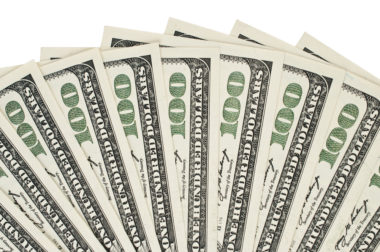Have you ever noticed how the “pink” items in the store — or the items labeled for women — always seem a bit more expensive than the ones labeled for men? What about clothing; why are women’s clothes often so much more expensive, even when they use less fabric?
Women in America (and around the world) are faced with a lot of challenges in their life. From being paid, on average, 77 cents to a man’s dollar (65 cents for black women and 57 cents for latina women), as well as facing the majority of household work and the “mental load” that comes with it, women already are faced with serious pay discrepancies throughout their lifetimes.
However, it turns out that being a woman doesn’t just mean you can be paid less — it may also mean that you’re charged more for average goods, clothing, and essential care products. But how exactly does the gender tax effect women, and why does it exist in the first place? In what other ways are women disadvantaged financially, and how will these revelations shape our future? Does a future without a gender pay gap or gender tax exist, and how can we achieve it?
Table of Contents
What is “Pink Tax” or Gender Tax?
The gender tax — also known as “pink tax,” which refers to the color of many of the products and associated packaging that are advertised to women — is the idea that consumer products labeled as women’s products cost more (on average) than the non-gendered or male-labeled equivalents, despite not requiring a serious change in ingredients, substance, or construction. For example, a 4-count Schick 5 blade razor for women may cost $18, while the 4-pack Schick 5 blade razor for men only costs $14.
A 2015 report by the New York City Department of Consumer Affairs (DCA) was one of the first nationally-recognized and widespread reports that illustrated how pervasive the gender tax is. According to the report:
“The Agency compared nearly 800 products with clear male and female versions from more than 90 brands sold at two dozen New York City retailers, both online and in stores. On average, across all five industries, DCA found that women’s products cost 7 percent more than similar products for men. Specifically:
- 7 percent more for toys and accessories
- 4 percent more for children’s clothing
- 8 percent more for adult clothing
- 13 percent more for personal care products
- 8 percent more for senior/home health care products
“In all but five of the 35 product categories analyzed, products for female consumers were priced higher than those for male consumers. Across the sample, DCA found that women’s products cost more 42 percent of the time while men’s products cost more 18 percent of the time.”
The Agency also found that many of these price discrepancies begin at a rather young age, with things like kids scooters or bike helmets being upwards of 4 percent more expensive simply for being marketed to girls and being pink in color. The discrepancies follow women well into adult life and even into senior life.
Why Does the Gender Tax Exist?
Women only make up a little over half the population — 50.8 percent according to the Census Bureau. Women also make up about 58 percent of the labor force in America, but only about 24 Fortune 500 companies have female CEOs. Overall, the majority of money is still earned by men in this country, and only a few women out-earn their spouses or male counterparts. However, the vast majority of buying power in a home — from choosing furniture, to grocery shopping and purchasing baby clothes — is reserved for women. Again, women tend to do the vast majority of household chores, which includes shopping, so companies are looking to find ways to capitalize on this by raising the price of women-specific items and goods. Unfortunately, this can end up costing a woman thousands of dollars over her entire lifetime.
How Much More Does it Cost to be a Woman?
The DCA also referenced a 1994 study performed in California that “studied the issue of gender-based pricing of services and estimated that women effectively paid an annual “gender tax” of approximately $1,351 for the same services as men.” Overall, the DCA came to the conclusion that women spend thousands of dollars more for products than men over the course of their life. Additionally, as consumers that have no control over the ingredients or marketing of a product, women are only able to purchase what is available to them in their marketplace, and thus businesses are placing a heavier financial burden on female consumers than their male counterparts.
This study is revealing, but it only looks at comparing the products that are sold both to men and women. But many women also face additional financial burdens, especially for those that menstruate, who may be spending upwards of $2,660 per lifetime on sanitary pads, pain relievers, doctors visits, yeast infection treatments, and more. Plus, many women oftentimes become the sole (or primary) caretaker of children in the home. Across the nation, about 100 million Americans live in poverty, and 42 million of them are women, and about 28 million children in poverty depend on them.
Women’s Healthcare and Discrimination in Treatment
Health Insurance Premiums
Gender discrimination extends beyond products and services that are tailored just for women — it also extends into the healthcare field. Unfortunately, gender tax has had a history of infiltrating the healthcare industry when increased insurance premiums for women (who are capable of bearing children) were common before the Affordable Care Act was passed. Since the healthcare costs of pregnancy can often be so high, insurance agencies commonly increased their monthly charges for women in order to compensate for the cost of pregnancy care, despite the fact that more men engage in “risky” health behaviors such as drinking and smoking.
Female Patients Receive Low Quality Treatment
Insurance industries aren’t the only ones to blame for discrimination in healthcare. The healthcare industry is full of examples of how women are mistreated, ignored, or harmed by medical professionals on a daily basis. Women’s pain is often downplayed by doctors or nurses, serious medical conditions are often ignored, and many women of color face additional discrimination — such as the story of Serena Williams almost dying of a pulmonary embolism after giving birth to her daughter because her nurse and doctor didn’t take her concerns seriously.
Reproductive Health Disparities
Where healthcare discrimination is often most talked about is in relation to women’s reproductive health and access to contraceptives. Almost all women of child-rearing age (99 percent according to the Guttmacher Institute) have used some form of birth control in their lifetimes. Whereas the majority of men have the option of getting a vasectomy or using condoms in order to prevent pregnancy, child-rearing women are often faced with either expensive birth control pills, surgical removal of reproductive organs, or even more expensive procedures such as an abortion or having to raise a child — which can put many women in substantial debt.
Lack of Support for At-Risk Women
Additionally, sliding scale clinics that are meant to help low income women that may become pregnant are often understaffed, underfunded, or forced to close due to state regulations on abortion treatment and care. Because of this, women face additional barriers to essential treatment, especially in relation to their reproductive health, but can also have issues seeing doctors for preventative health. Without clinics such as Planned Parenthood or other sliding scale doctor’s offices, women with cancer or other chronic illnesses may go months or years without knowing their condition, which in turn can create further health issues and potentially death.
Discrimination in Care for Transgender Women
For transgender women, discrimination in healthcare treatment can be even more common, and oftentimes far more dangerous. Despite the growth in knowledge about a transgender person’s lived experiences, it is still legal in 31 states to refuse medical care to transgender patients (as well as discrimination in housing, employment, and more).
Additionally, many doctors will prescribe treatment on the basis of transgender status without performing a thorough examination, something commonly known as “transgender broken arm syndrome.” For example, if a transgender woman comes into a doctor’s office with a broken arm, the doctor may say it’s due to their transgender status, or the fact that they’re taking hormone therapy, or a host of other unreasonable and insensitive (as well as irrelevant) reasons. Transgender medical treatment is already very expensive for many people, and many insurance companies refuse to cover essential healthcare services such as mental health support or hormone therapy that can aid in a person’s transition.
How Does the Gender Pay Gap Come Into Play?
The gender pay gap has been a hotly contested topic for many years. Unfortunately, not only are women taken advantage of financially with artificially inflated prices on “gendered” goods, but they are also expected to be the sole caretaker of both the home and their children. Because of this, many women perform hours of unpaid labor simply doing laundry, cleaning up the home, cooking dinner, and caring for their children.
Research has shown that although discrimination in pay is still common in many industries, and many women face additional discrimination in the workplace, the majority of the pay gap is due in large part to one thing: having children.
The Motherhood Gap
A study performed in Denmark and released in January 2018 by the National Bureau of Economic Research in Massachusetts found that the “child penalty” (as they dubbed it) is the leading factor in gender pay inequality around the world — even in Scandinavian countries such as Denmark where the wage gap is as little as 15 percent. The study found that the way a woman prioritized work and home life had a massive effect on both her pay throughout her lifetime, as well as the way in which children internalized family dynamics.
Many women — understandably — would much prefer to spend more time at home with their new children, taking advantage of maternity leave for anywhere from a few months to a year, which meant they were often passed up for job opportunities, raises, and additional benefits. On top of this, child care costs are rising astronomically, so many women may be forced to stay home in order to afford other expenses, such as rent, food, clothing, and doctors visits for their newborn. Childless women, on the other hand, experienced very little difference in pay compared to their male counterparts.
This 2018 study also noted that the most dramatic drop in a woman’s pay happened almost simultaneously with the birth of their first child, which is normally in their early 30’s. Men, on the other hand, saw very little change at all after the birth of their first child. Consequently, only 10 percent of Danish men utilized parental leave in the country, and even fewer men are given parental leave benefits in the United States.
A Potential Solution to the Gender Pay Gap
In fact, parental leave availability to both parents is one of the only ways in which to shorten the gender pay gap that we see today. In Iceland, as Vox notes, parental leave is offered to both men and women after the birth of their child for up to 13 weeks, and over 90 percent of new fathers take advantage of this benefit. It’s not that men aren’t eager to become fathers and spend time with their kids, but many of them aren’t given the opportunity to stay at home during those first few crucial months.
How Will the Gender Tax Change in the Future?
Women in America are underpaid, overworked, and overcharged for everyday goods. The gender tax is fairly rampant, and when mixed with the gender pay (or motherhood) gap, it’s rather astonishing to see just how unfair the capitalist world is to women.
Yet, the question remains: how far off is a future that is free of gender tax? It could be years, decades, or more before America sees a day in which women-targeted products aren’t charged more than their male counterparts. Additionally, it can be extremely challenging to prove discrimination has happened — especially when it comes to products that only have a few dollars in price difference. However, knowing the facts is the first step towards making a difference.
In 2015, when the DCA report was first released, immediately some retailers such as Target and CVS changed the prices of some of their products, noting a “network error” that made the prices significantly more than the male equivalent. Even before that, in California, a 1995 state law was passed that banned gender tax discrimination in sold services such as haircuts, laundry, or dry cleaning (but excluding gender tax associated with specific products). A more recent measure, Senate Bill 899, is expected to cover gender tax on products, but is still sitting within the California senate awaiting a vote.
Measures like this are fairly rare, but show that media attention, public outcry, and female representation in government can lead to lasting changes that benefit everyone. Everything from eliminating gender tax to pushing for more equitable paternity or parental leave could help shape a future that is more equitable for everyone — no matter their gender.
Image Source: https://depositphotos.com/





